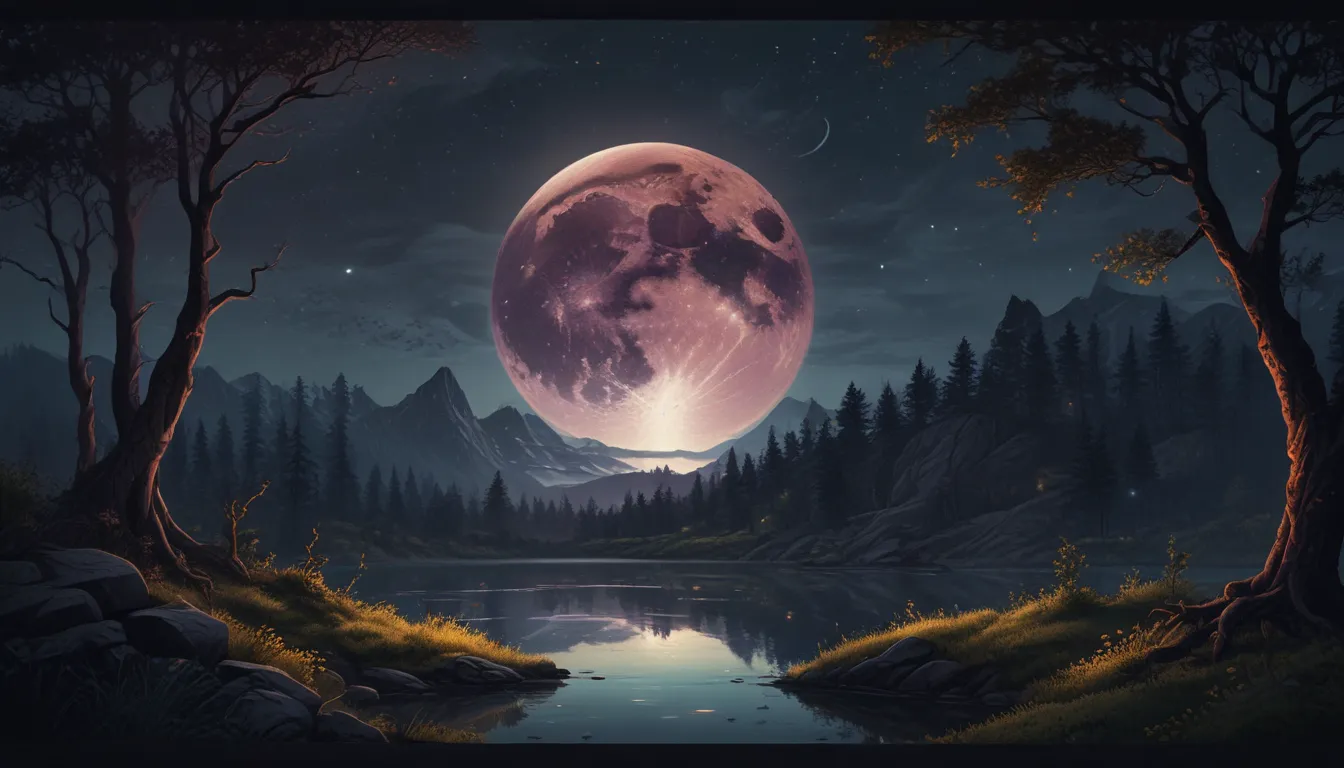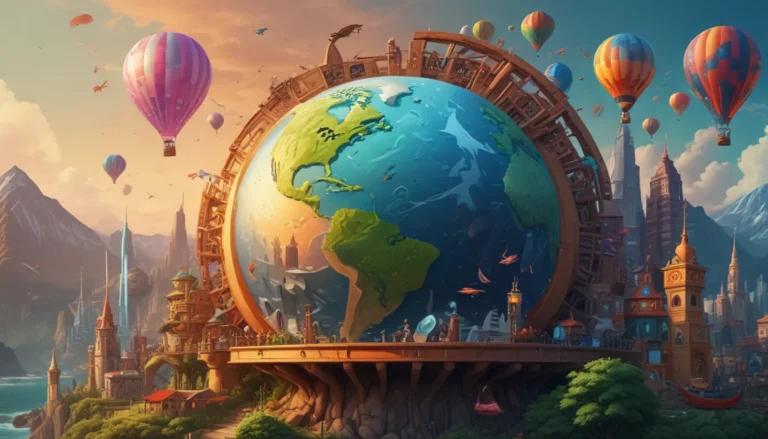A Note About Images: The images used in our articles are for illustration purposes only and may not exactly match the content. They are meant to engage readers, but the text should be relied upon for accurate information.
Lunar eclipses have long been a source of fascination for humanity, captivating us with their celestial beauty and inspiring a sense of wonder about the mysteries of the universe. From ancient myths to modern scientific discoveries, the allure of the lunar eclipse transcends time and culture, leaving an indelible mark on our collective consciousness. Join us as we embark on a cosmic journey through 27 captivating facts that illuminate the enchanting world of lunar eclipses, offering insight into the science, mythology, and cultural significance of this celestial phenomenon.
Unveiling the Magic of Lunar Eclipses:
-
The Longest Lunar Eclipse: On July 27, 2018, the longest lunar eclipse of the century mesmerized sky gazers worldwide, lasting an impressive 1 hour and 43 minutes, showcasing the breathtaking beauty of the celestial dance between Earth, the moon, and the sun.
-
The Next Celestial Spectacle: Mark your calendars for May 16, 2022, when the next lunar eclipse visible from North America will grace the early morning sky, transforming the moon into a stunning shade of red and beckoning observers to witness this awe-inspiring event.
-
The Essence of a Lunar Eclipse: A lunar eclipse can only occur during a full moon, when the Earth aligns between the sun and the moon, casting a shadow on the lunar surface and creating a mesmerizing celestial display that captures the imagination of all who gaze upon it.
Unveiling the Secrets of the Moon:
-
A Radiant Reflection: Contrary to popular belief, the moon does not emit its own light but rather reflects the sun’s rays, illuminating the night sky with its luminous glow and captivating observers with its ethereal beauty.
-
Ancient Wisdom: The ancient Greeks possessed the knowledge to predict lunar eclipses, showcasing their advanced understanding of astronomy and celestial movements, which laid the foundation for future scientific exploration.
-
The Scarlet Glow: The moon’s reddish hue during a lunar eclipse is a result of sunlight passing through the Earth’s atmosphere, where blue wavelengths scatter, leaving the longer red wavelengths to illuminate the moon, creating a captivating crimson glow that enchants all who witness it.
Delving Deeper into Lunar Orbit:
-
Inclined Orbits: The moon’s orbit is inclined at 5 degrees to Earth’s orbit, preventing a lunar eclipse from occurring every full moon and adding an element of rarity and intrigue to this celestial event.
-
Eclipse Seasons: The term “eclipse season” refers to the period when lunar and solar eclipses can occur, aligning the sun, Earth, and moon in a cosmic ballet that offers observers the chance to witness the captivating dance of celestial bodies.
-
Orbital Influences: The moon’s distance from Earth, known as perigee, can affect the duration of lunar eclipses, with closer proximity leading to longer-lasting eclipses and a more striking visual spectacle for sky gazers to behold.
Embracing the Cosmic Dance:
-
An Ever-Changing Orbit: The moon’s elliptical orbit influences the frequency of lunar eclipses, as it fluctuates between perigee and apogee, creating a dynamic and unpredictable pattern of celestial events that captivate observers with their unique beauty.
-
Shadowy Realms: During a lunar eclipse, the moon’s shadow consists of two distinct regions: the penumbra, where the Earth partially blocks the sun’s rays, and the umbra, where direct sunlight is completely obstructed, casting a deep shadow on the moon and transforming it into a mesmerizing celestial spectacle.
-
Global Observations: Lunar eclipses can be witnessed from anywhere on the nighttime side of Earth, fostering a sense of unity and wonder among enthusiasts worldwide as they marvel at the elegant transformation of the moon in the night sky.
Reflecting on Lunar Mysteries:
-
Endless Reverberations: The moon’s enduring presence in the night sky has inspired countless myths and legends throughout history, shaping cultural beliefs and narratives that celebrate the timeless dance of celestial bodies and the mysteries of the cosmos.
-
Artistic Inspirations: Artists and creators have drawn inspiration from lunar eclipses, infusing their works with the ethereal essence of this celestial phenomenon and capturing the enchanting beauty of the moon’s transformative glow.
-
Future Horizons: The moon’s timeless association with lunar eclipses continues to captivate and inspire future generations, igniting a sense of wonder and curiosity about the mysteries of the universe and the celestial wonders that unfold beyond our earthly realm.
Marveling at Lunar Splendor:
-
The Marvels of Totality: During the total phase of a lunar eclipse, the moon enters Earth’s umbra, revealing the most dramatic and mesmerizing transformation as it showcases the enchanting dance of light and shadow in the night sky.
-
A Variable Vision: The moon’s apparent size during a lunar eclipse can vary based on its distance from Earth, offering observers a diverse range of visual experiences that highlight the unique beauty and allure of each celestial event.
-
Celestial Synchronicity: The moon’s gravitational influence on Earth affects ocean tides during a lunar eclipse, demonstrating the interconnected nature of celestial bodies within our solar system and the harmonious dance of cosmic forces.
Contemplating Lunar Enchantment:
-
Temporal Transformations: As the moon’s orbit gradually expands and slows down, the duration of lunar eclipses increases, providing extended opportunities for observers to marvel at this celestial spectacle and contemplate the mysteries of the cosmos.
-
Cultural Significance: The moon’s role in ancient cultures was deeply intertwined with lunar eclipses, shaping belief systems and cultural traditions that honored the celestial realm and celebrated the timeless dance of light and shadow in the night sky.
-
Cosmic Inspirations: The moon’s enduring presence and influence on human creativity is evident in the artistic expressions inspired by lunar eclipses, which capture the mystical essence of this celestial spectacle and evoke a sense of wonder and awe in all who witness it.
Embracing the Cosmic Tapestry:
-
The Celestial Ballet: Lunar eclipses invite us to gaze skyward and marvel at the celestial splendor of our universe, offering a transcendent experience that ignites the imagination and kindles a sense of wonder within our hearts as we contemplate the mysteries of the cosmos.
-
Timeless Reverence: The enduring allure of lunar eclipses transcends time and culture, inviting us to embrace the enchantment of the cosmos and explore the interconnectedness of celestial bodies as they weave a cosmic tapestry of light and shadow across the night sky.
Reveling in Lunar Splendor:
-
Celestial Reflections: Lunar eclipses reveal the profound beauty and harmony of the universe, inviting us to witness the celestial ballet of the Earth, moon, and sun as they dance across the night sky, creating a mesmerizing spectacle that captivates the imagination and sparks a sense of wonder and curiosity about the mysteries of the cosmos.
-
A Cosmic Legacy: The 27 Best Lunar Eclipse Facts encapsulate the captivating essence of this celestial phenomenon, inviting us to embark on a cosmic journey that transcends time and space, leaving an indelible imprint on the human spirit and inspiring a sense of awe and reverence for the celestial wonders that unfold before our eyes.
Conclusion:
Lunar eclipses are not only captivating celestial events but also opportunities to witness the harmonious dance of celestial bodies and ponder the profound mysteries of the universe. As we explore the 27 best lunar eclipse facts, it becomes evident that these phenomena hold a significant place in both ancient mythology and modern scientific research, offering insights into the interconnectedness of celestial forces and the timeless beauty of the cosmos. Whether you’re a seasoned astronomer or simply an admirer of the night sky, the next lunar eclipse beckons you to embrace the enchantment of the celestial realm and marvel at the celestial wonders that unfold beyond our earthly realm.
FAQs:
What causes a lunar eclipse?
A lunar eclipse occurs when the Earth comes between the sun and the moon, causing the Earth’s shadow to fall on the moon, leading to the moon temporarily darkening.
When is the next lunar eclipse?
The next lunar eclipse is scheduled to occur on [date], and it will be visible from [location]. Lunar eclipses are awe-inspiring events that offer a chance to witness the celestial ballet of the Earth, moon, and sun.
Conclusion:
In conclusion, the enchanting allure of lunar eclipses transcends time and culture, captivating and inspiring humanity with their celestial beauty and mystical essence. As we gaze skyward and witness the celestial dance of light and shadow unfold before our eyes, we are reminded of the interconnectedness of celestial bodies and the profound mysteries that permeate the universe. The 27 Best Lunar Eclipse Facts invite us to embrace the enchantment of the cosmos and explore the wonders of the night sky, inspiring a sense of awe and wonder that transcends generations and ignites the imagination.





